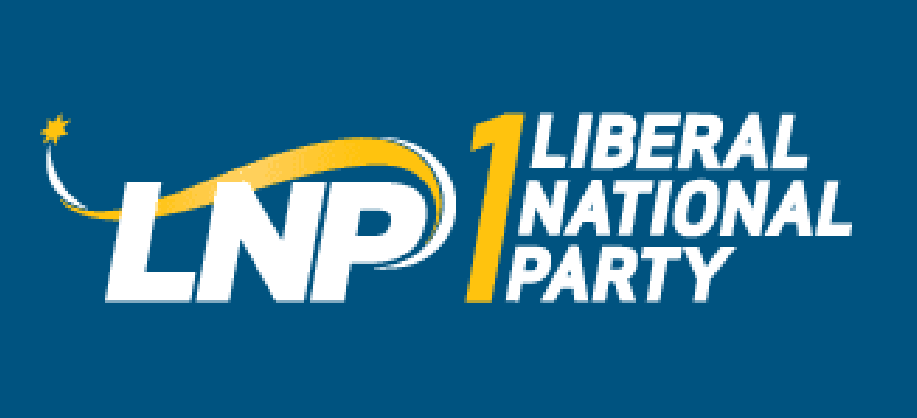Record funding for rural and regional health continues to strengthen health care in Wide Bay
Federal Member for Wide Bay and Deputy Speaker of the House of Representatives Llew O’Brien has welcomed a $296.5 million commitment to regional, rural and remote health in the 2022–23 Budget that will improve access to MRI imaging, strengthen the workforce, and increase training opportunities for medical professionals in Wide Bay.
The Budget measures announced this week build on earlier initiatives, including the ten-year Stronger Rural Health Strategy (SRRS), to address the challenges of access to health care for regional, rural and remote patients.
Minister for Regional Health, Dr David Gillespie, a former regional doctor for more than 30 years, said the health and wellbeing of people living in regional, rural, and remote Australia will always be a priority for the Morrison Joyce Government.
“A third of Australians live outside the cities, and this Government is working to ensure they all have access to quality, affordable health care,” Dr Gillespie said.
“We are also absolutely invested in strengthening and supporting the health care workforce in rural communities, through rural medical training and other strategies to attract and retain health professionals.”
Mr O’Brien said this week’s Budget targeted key areas of regional, rural and remote health that would increase opportunities for medical professionals in Wide Bay, attracting more healthcare workers and easing the burden on existing staff.
“The best way to get more doctors and health professionals into regional areas like Wide Bay is to give them access to training here and further their education, which means they are much more likely to stay once qualified,” Mr O’Brien said.
Regional and rural health workforce
The Morrison Joyce Government will increase opportunities for rural health and medical training, to strengthen the regional and rural health care workforce and encourage more health professionals to practice in the bush, including:
- $99.3 million towards rural medical education and training, including 80 additional Commonwealth supported places, to give more students, especially those in regional and rural Australia, the opportunity for medical school education and training; and
- $2.1 million will continue the National Rural Health Students Network of Rural Health Clubs in universities with a Rural Health Multidisciplinary Training program, to support students while they study.
“Griffith University operates a rural clinical school in Gympie and there is also one at Hervey Bay run through University of Sunshine Coast and both of those universities will be eligible to apply for a share of $99.3 million for regional medical education,” Mr O’Brien said.
“If successful, this will provide them with expanded opportunities to train a local GP and doctor workforce across the Wide Bay. The renewal of funding for National Rural Health Students Network of Rural Health Clubs is also great news for clubs like Hope4Health, which is Griffith University’s rural health club, and runs rural clinical skills trips to Gympie.”
Improved Access to Diagnostic Imaging
The Morrison Joyce Government is making MRI scans more affordable and more accessible closer to home by investing $66 million over four years to deregulate and expand Medicare-funded MRI scans in regional, rural and remote areas including Maryborough.
This change begins on Tuesday, 1 November this year and will benefit Modified Monash Model 2–7 areas.
“This change means that in Wide Bay, Medicare-subsidised MRI services can be delivered from November this year across more parts of the electorate including Maryborough, so patients can benefit from reduced out-of-pocket costs for MRI scans and access world-class services closer to home,” Mr O’Brien said.
Aeromedical and health outreach services
To ensure critical emergency services in rural and remote Australia, the Morrison Joyce Government is investing $55.5 million in aeromedical services, including an additional $33.3 mllion over four years for the Royal Flying Doctor Service, in addition to their current funding of $84 million per year, and $4.1 million for Little Wings to provide aeromedical support for seriously ill children across NSW, the ACT and Queensland.
Maternity Services
The Morrison Joyce Government is investing $1.2 million to appoint a Senior Midwifery Advisor to improve the quality of policies and programs implemented as part of Woman-Centred Care: Strategic Directions for Australian Maternity Services.
Support for regional, rural and remote headspace services
The Morrison Joyce Government is also providing $4.2 million to support headspace centres in regional, rural and remote areas to attract and employ GPs, enabling headspace services to deliver the complete model of enhanced primary care.
Additional mental health in regional, rural and remote areas
In addition to the $296.5 million investment, the Morrison Joyce Government is also investing in the mental wellbeing of people in the bush, by delivering mental health, wellbeing and suicide prevention services in regional, rural and remote communities, including:
- $42.7 million to establish specialised regional initiatives for suicide prevention through primary health networks
- $8.6 million to establish the National Closing the Gap Social and Emotional Wellbeing (Mental Health) Policy Partnership to maintain momentum in reducing the devastating and disproportionate impact of mental ill-health and suicide on Aboriginal and Torres Strait Islander people;
- $14.3 million for programs delivered by headspace to provide services to support young Australians in need
- $1.8 million towards the Raising Children Network, to maintain the Raising Healthy Minds app, improving the mental health literacy of Australian parents and carers
In addition, the 2022-23 Budget is investing in the following initiatives:
- $14.3 million over four years will fund additional University Departments of Rural Health activities linked with Aged Care facilities, presenting opportunities for these regions to have better access to services for senior Australians, and better training opportunities for health students in regional and rural Australia; and
- $13.9 million over two years from 2022–23 to deliver 150 additional scholarships each to support Aboriginal and Torres Strait Islander students to gain qualifications and enter the health workforce.
The new workforce measures announced in this week’s Budget build on the $123 million Health Workforce Reform package, announced in the 2021-22 Budget in support of the Stronger Rural Health Strategy and other recent initiatives and programs that are solely designed to improve rural health.
Since 2013, our Government has approved more than 2,800 new and amended listings on the PBS at an overall investment of $15 billion including the listing of Trodelvy, which was included in this week’s Budget, and is used to treat a rare form of breast cancer and will save patients up to $80,000 per treatment.


